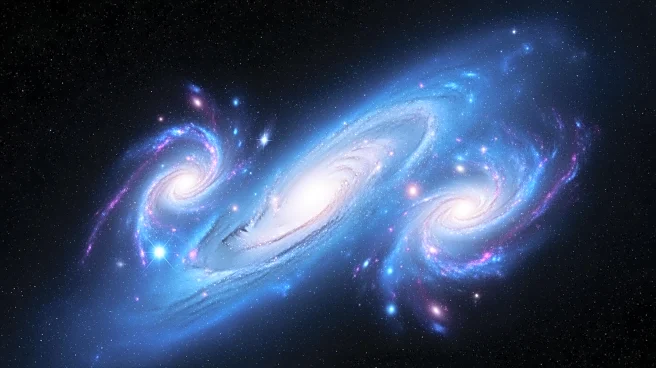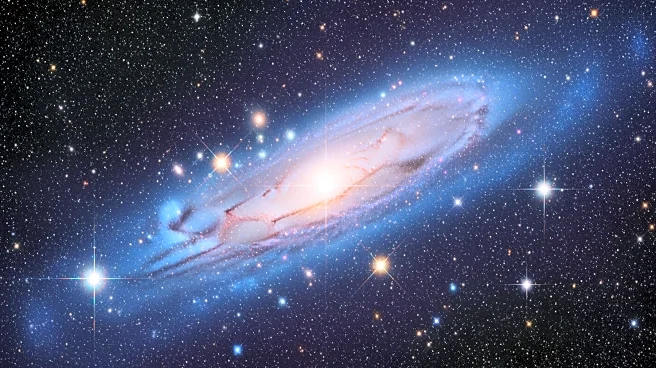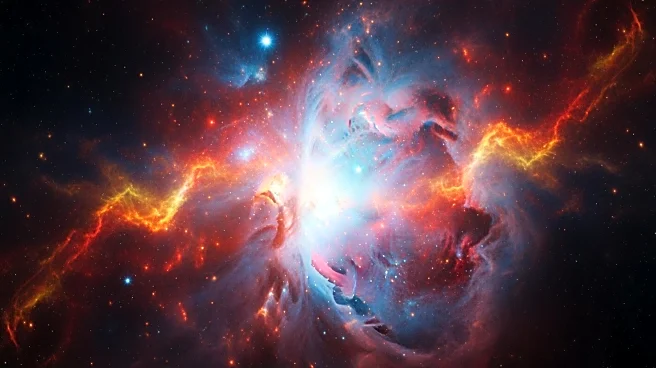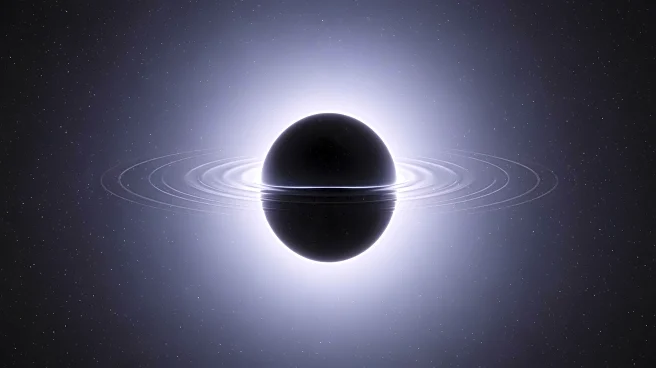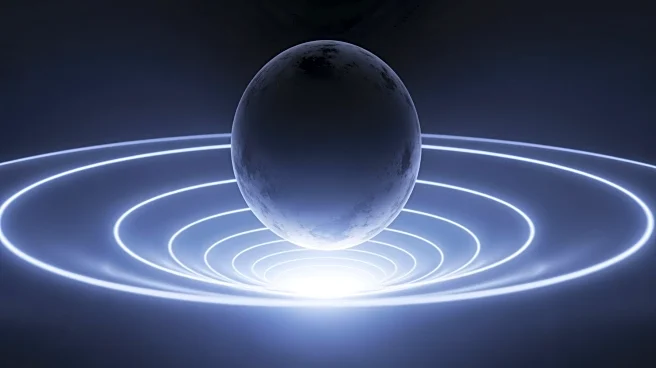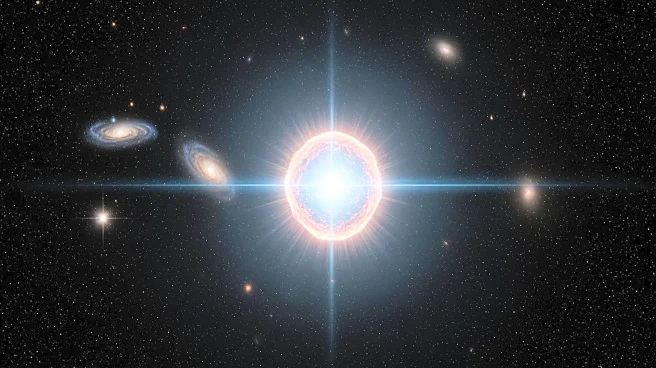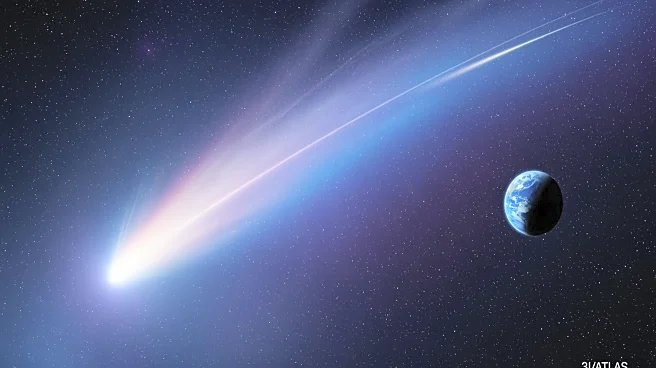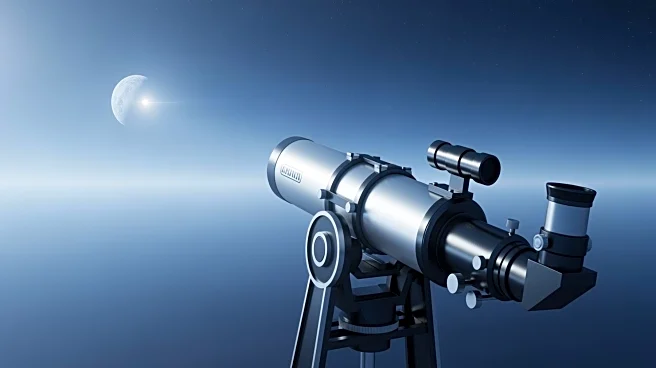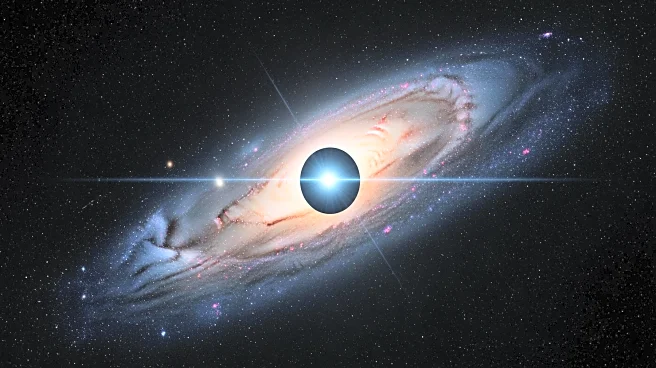What's Happening?
A new study using the James Webb Space Telescope (JWST) has found that early star-forming galaxies were far more turbulent than their modern counterparts. Led by Lola Danhaive from the University of Cambridge,
the research examined 213 galaxies from 800 million to 1.5 billion years after the Big Bang. The study revealed that these galaxies had messy, puffed-up disks, with turbulence dominating over rotation in more than half of the cases. This turbulence was linked to high star formation rates, which disrupted the formation of stable disks.
Why It's Important?
The study provides a key missing link in understanding galaxy evolution, showing the transition from chaotic early galaxies to the more ordered disks observed today. This research enhances our knowledge of the processes that shaped the universe's structure and the conditions that led to the formation of galaxies. The findings align with theoretical predictions and offer a statistical characterization of early galaxies, contributing to the broader field of cosmology and astrophysics.
What's Next?
The research team plans to combine JWST observations with data from the Atacama Large Millimeter/Submillimeter Array (ALMA) to study the assembly of the first galaxies. This will help further understand the transition from chaotic systems to stable spiral galaxies. Future programs will continue to explore the early universe, providing deeper insights into galaxy formation and evolution.
